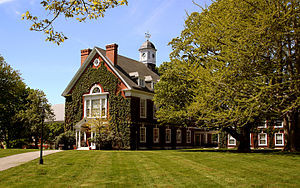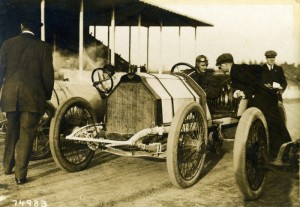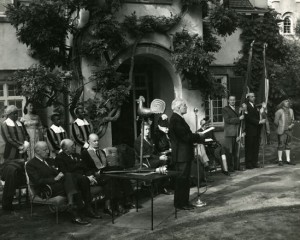Paul Gibert Thebaud Jr. was born on October 17, 1891. He attended Pomret School.
The Case of the Swedish Butler
John Bjorlin was born in Stockholm of a well to do family. He attended Uppsala University and graduated summa cum laude. He spoke Russian, English, French, German, Spanish, and Italian.
But after graduating, he moved to Paris, and there got involved with unspecified “inclinations and habits” that caused his father to disown him and leave his property to John’s brother, Niels.
He was well educated but penniless, but his manners and his ability with languages enabled him to get jobs as an upper servant, as courier, interpreter, and head of household. In 1904 He married Kate Bobb in Philadelphia, but deserted her after three months.
The Thebauds hired him as the tutor for their son Paul Gibert Jr. He also accompanied the elder Thebaud on business trips in his import-export business as an interpreter.
In 1907 Bjorlin became more and more morose and started drinking heavily. He had a gun because of burglar scares in White Plains – and the Thebauds had already had a jewelry theft.
On November 10 Paul Jr. had been riding his motorcycle all day and retired exhausted.
At 5:50 AM on November 11, 1907, the night watchman roused Bjorlin, who, clad only in his bathrobe, went to Paul Jr.’s room and locked the door behind him. Shortly after that the watchman heard a shot, and a minute after that another shot. Bjorlin had put his gun to the forehead of the sleeping Paul Jr., shot him, and then put the gun to his own head and shot himself. Bjorlin died instantly with a bullet in his brain.
What lead Bjorlin to do this? Various theories were put forward in the newspapers:
- Bjorlin was suffering from delirium tremens and was totally insane.
- Bjorlin thought he heard a burglar in Paul’s room and shot the boy by mistake. When he say what a mistake he had made, he turned the gun on himself.
- Bjorlin and Paul were going to go hunting that morning. Bjorlin jokingly pointed the revolver a Paul; when it went off, he was horrified and decided to kill himself.
- Bjorlin intended to kill the other butler and shot Paul by mistake
- A burglar has shot them both.
But
- Bjorlin had left a hurriedly written will on his desk
- Bjorlin had made a list of all the people in the house he intended to kill, all the family and servants, with Paul Jr. as Number One.
It was clearly a matter of an attempted murder and a suicide. But what could have been the motive? Was it simply insanity?
The New York Times reported that
Bjorlin showed a great fondness for Paul Thebaud. They became almost inseparable companions.
Another paper reported that
Bjorlin, the other servants said, was so fond of young Thebaud that he scowled and fumed if the boy spoke kindly to anyone but him. Several times he threatened to thrash stablemen and undermen in the house whom he accused of currying favor with Paul.
Friends of the family had been suspicious of the relationship of Paul Jr. and Bjorlin. They said
the bond between them was strangely close for master and servant
and
from the beginning of his service had displayed extreme affection for the young Paul.
The most likely explanation is that Bjorlin had become infatuated and obsessed with the boy. Bjorlin feared discharge and separation, so he decided to kill the boy he loved and himself. One can surmise the nature of the activities Bjorlin had engaged in in Paris. The investigation seems to have been quickly dropped and the official explanation was that Bjorlin had intended to kill the other butler. This unconvincing explanation is an indication that the detectives suspected what was going on, but did not want to embarrass either the boy (who was probably completely unaware of the nature of Bjorlin’s interest in him – it was a more innocent age) or the family.
Paul Jr. almost miraculously survived, seemingly unscathed. When he regained consciousness, he was told initially that he had fallen and hit his head on a radiator. Later he was told the truth, but he could supply no motive for Bjorlin’s actions.
A Mostly Normal Life
Paul Jr. took up race car driving.
During World War I he applied his expertise. He served
in a special innovative army corps in WWI devoted to motorcycles with sidecars and mounted machine guns.
On February 5, 1914, he married Dorothy Vander Hooge in a small ceremony at St. Agnes Church in Manhattan. They had had several children.
He was president of the St. Nicholas Society.
Dedication of Sunnyside, the historic home of Washington Irving in Tarrytown, New York.
John D. Rockefeller, Jr., speaking.
On left: Paul G. Thebaud (in sash), president of the St. Nicholas Society of the City of New York, is seated with other members of the society, accompanied with retainers of the society clad in costumes inspired by the tunics worn by pages in the service of the old Dutch Governors of New York. At rear, Frances Lehnerts, who sang the National Anthem during the dedication. On right: Washington Irving III (1917-1968, great-great-grand nephew of Washington Irving) seated behind weathercock, Abby Aldrich Rockefeller, David Rockefeller (obscured), and Alice Runyan.
But he continued his love of motorcycles:
Even into his very later years, he was known to drive up in his motorcycle with sidecar from Greenwich, CT to Woods Hole, MA to catch the boat over to Nantucket for the summer.
He died September 2, 1983 in Connecticut.


